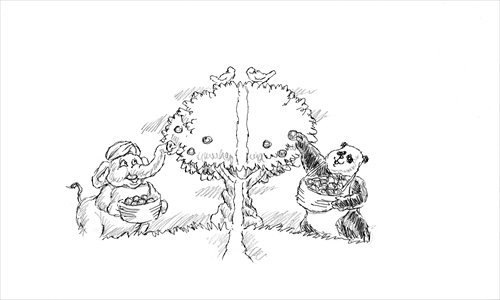Ending Sino-Indian border dispute essential to continued prosperity

China-India border tensions have been an increasing cause of concern between two of the most vibrant economies of Asia. While the border conflict in 1962 had occurred in the context of two countries whose economies were weak, today the situation is quite different.
At present, both China and India are major global economies. Trade between them was negligible in 1962. Today, it stands at $75 billion and will soon pass the $100-billion mark.
However, despite growing bilateral economic relations, the border dispute appears intractable. Why so?
One need not look far for the answer. Sino-Indian relations are still affected by some thorny divergences over issues like the McMahon line and the presence of the "Tibetan government-in-exile." These contradictions are further complicated by border negotiations held in a climate of Indian apprehensions that the 1962 border war between China and India could be repeated.
The apprehensions are not without merit. The militarization of the border from both the Chinese and the Indian side is a growing reality.
China has vastly improved its border roads in the eastern sector bordering India, which will considerably enhance movement by the PLA.
On the border with India, China has deployed 13 Border Defense Regiments totaling around 300,000 troops. Six divisions of China's Rapid Reaction Forces are stationed at Chengdu, a southwestern Chinese city, with 24-hour operational readiness and supported by an airlift capability to transport the troops to the China-India border within 48 hours.
India too has upgraded its military presence near the eastern border.
A five-year expansion plan to induct 90,000 more troops and deploy four more divisions in the eastern sector is underway. There are 120,000 Indian troops stationed in the eastern sector, supported by two Sukhoi-30 MKI squadrons from Tezpur in Assam. Two more Sukhoi-30 MKI squadrons are in the process of being inducted into the air force structure in the eastern sector.
Given this overt militarization of the China-India border conflict, any escalation in the conflict dynamics there will have a direct bearing on the regional strategic stability of Asia.
This is even more plausible in the present context as China and India emerge as two of the largest military hardware-importing countries in the world.
Through the China-India conflict, one envisages a scenario where a nuclear-armed China and India with more than 300 nuclear weapons, 3 million standing troops, and a population of 2.3 billion people between them, will fight a future war.
This is dangerous for Asia and the world and will severely undermine global peace and prosperity. The physical proximity of both countries forewarns a great tragedy for their populations if war occurs.
Security analysts have argued that internal problems within India and China would create large disincentives for conflict.
However, despite such constraints, wars have broken out between states based on misunderstandings about each other's intentions. Therefore, the border conflict between both countries is becoming a high price to pay especially in the context of the rise of Asia.
For Asian stability and prosperity, both these powerful countries of Asia should earnestly work toward resolving the border issue within the three-stage process that has been identified.
Moreover, it is pertinent that both China and India recognizes that despite increasing economic cooperation, political tensions over land can lead to conflict, as the example of Europe prior to World War I clearly reflects. As a result, $75 billion in bilateral trade does not mean that all is well.
While competition at a particular level is inevitable, both countries must ensure that Asia remains peaceful if they want to continue Asia's path to prosperity. Hence, managing and resolving the border issue peacefully in the next five years is something worth seriously working for.
The author is a senior fellow at the United States Institute of Peace, Washington, DC, and a research fellow at the Institute for Defence Studies and Analyses, New Delhi. ngoswami@usip.org